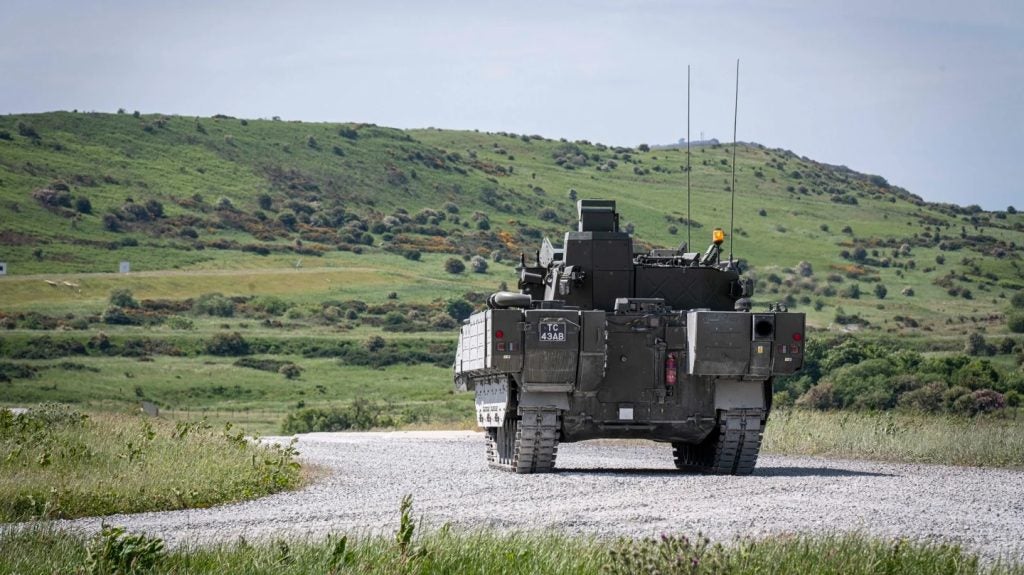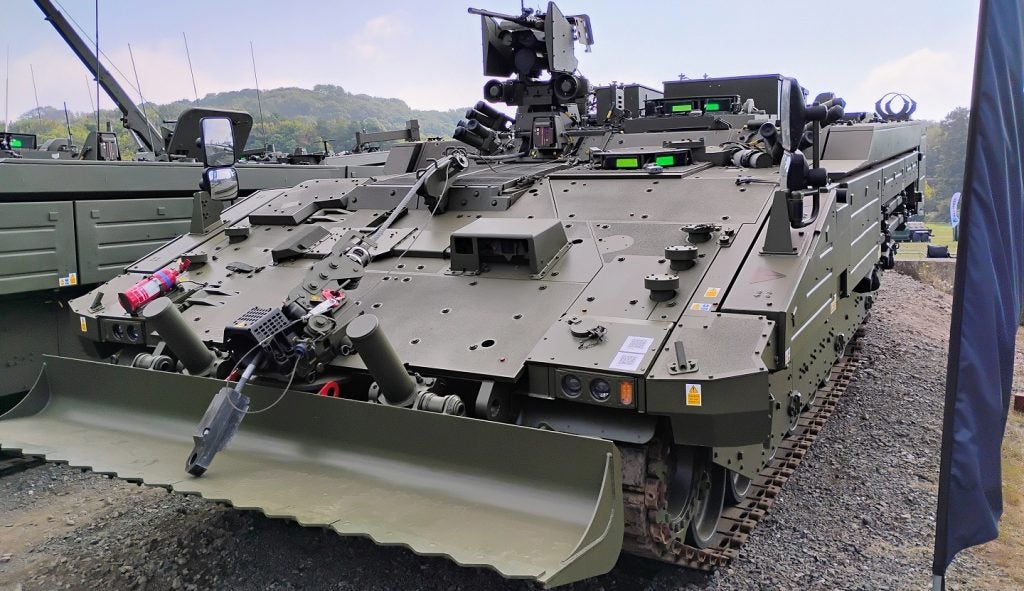The British Army’s Ajax armoured fighting vehicle (AFV) has undertaken hot weather trials in recent weeks, as the platform continues along what has been an extended timeline towards initial operating capability (IOC), expected by December 2025.
Information disclosed during the DVD exhibition and conference at the UTAC Millbrook vehicle test site on 19 September 2024, indicated that the hot weather trials took place in desert conditions in temperatures that rose to 46°C, with descriptions of the Ajax being hard to distinguish among the trial area’s ‘sand dunes’.
Looking at countries and regions where UK vehicles have been known to undertake trials, it is possible that the Ajax hot weather tests could have taken place in the United States, or else in the Gulf region.
In the Gulf, the Sultanate of Oman hosts a British Army logistics hub at Duqm, which is close to the southeastern range of the Rub Al Khali desert that encompasses much of the Arabian Peninsula. Within the timeframe of the Ajax’s hot weather trials, temperatures in Duqm reached up to 40°C, and would have been higher further into the interior.
Similar temperatures were recorded at US Army military test complexes, such as Fort Bliss, over the past fortnight.
General Dynamics Land Systems, which is manufacturing the Ajax family of vehicles for the British Army, lists the UK, US, Saudi Arabia, the Middle East, and North Africa, as active markets.

Officials for UK Defence Equipment & Support (DE&S) would not specify which country hosted the UK Ajax AFV hot weather trials, when asked by Army Technology, other than they took place “a few weeks ago” in an “A1 climatic region”.
The UK military classifies an A1 climatic region as ‘Extreme Hot Dry’, as comprise areas which experience very high temperatures accompanied by high levels of solar radiation, namely, hot dry deserts of North Africa, Western Aurtalia, parts of the Middle East and central Asia, including parts of the Indian sub-continent, and parts of southwestern United States and into Mexico.
Ajax: updates and timelines
In July 2024, the UK’s new Labour government released an update timeline that stated the British Army’s £3.47bn ($4.61bn) Ajax armoured cavalry programme would not reach IOC until December 2025.
The IOC delivery checkpoint in reached once 50 units of the total programme requirement of 589 have been delivered, which will see 27 used by a deployable squadron with the remaining 23 utilised by the British Army for crew and maintainer training.
In total the programme is intended to deliver the platforms across six variants, incorporating the Ajax infantry fighting vehicle, Apollo armoured recovery vehicle, Ares armoured personnel carrier, Argus reconnaissance vehicle, Athena command post vehicle, and Atlas engineering vehicle into British Army service.

In January 2024 it was disclosed that 152 Ajax programme vehicles had been built, representing just over 25% of the planned total fleet number. The IOC standard vehicle is known as Capability Drop 3 and forms the deployable standard ahead of the spiral development and integration of Capability Drop 4, or Full Operating Capability (FOC).
Officials disclosed that the British Army received its first Capability Drop 3 Athena command post vehicle the week beginning 16 September.
In August 2024, the Ajax performed mobile firing trials, following earlier cold weather tests in Sweden, using the new, stablised 40mm main gun system.
The Ajax programme had to be paused in 2021 following revelations that crews training on early-build iterations had experiencing significant medical issues related to excessive noise and vibration.









